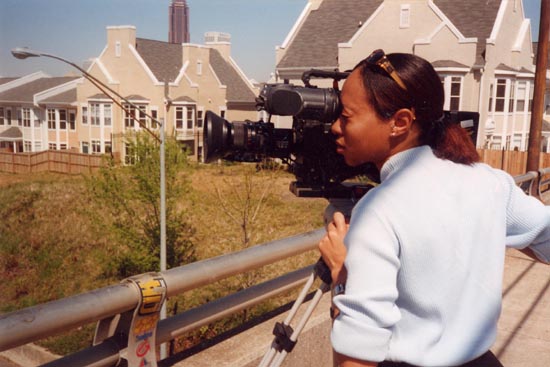On the Outside, Looking In: A Journey to the Past in
Rural Georgia
By Turaya Bryant
TRENTON, Ga. -- In 1956, amid the tumult of the Civil Rights Movement, the Confederate battle flag was embraced as the official representation of the state of Georgia.
Last year, 45 years later, long after racial segregation was abolished across America and equal rights made mandatory - the old Georgia state flag was redesigned to reflect more modern values. On the new flag the Confederate symbol was drastically reduced in size and made just one of six other historical depictions of Georgia flags set amid a field of blue.
Many black Georgians praised the legislative move as a progressive act of conscience, for the old flag symbolized racial oppression and bigotry to many. But some whites were enraged, seeing the change as yet another loss of their Southern heritage.
Amid the controversy the leaders in this largely white town in northwestern Georgia last year decided to make a move to preserve their own view of history, adopting the Confederate battle flag as the city’s official flag.
Thus, I am here -- a black journalist from Berkeley visiting with a television crew to produce a story about the Confederate flag and its meaning to Southerners. And with this visit has come an emotional mix of fury, revulsion, and professional curiosity stirring inside me.
In reading about these events from my school in California, anger emerged from the depths of my soul. In my mind, the idea of resurrecting the Confederate battle flag was a slap in the face to all of the people who struggled and died for equality in this country. It seemed some southern whites had not really changed much at all.
In preparing to do a TV magazine story about this community, I knew it would be important to keep an open mind. But I was apprehensive. For one thing, I had never visited a small southern white town before and had no idea how the residents would react to questions about the flag. They sounded courteous and tolerant when I spoke with them over the phone from California, but how would they react in person?
For another thing, some of them didn’t know that I and one of my colleagues Kelli Nero, were black. They were aware that my second colleague Hadas Ragolsky, was a Jewish woman from Israel.
We left the hustle and bustle of Atlanta at 7 a.m. on a balmy Wednesday, arriving two hours later in this four square mile town near Lookout Mountain. Exiting highway 75, we cruised down Main Street, which bisects the town from one end to the other.
As we drove, pedestrians and motorists, noticing the strange Montero Sport, slowed down and stared, making me feel as if I were a participant in a circus act.
It was a pleasant little drive through town, the birds were chirping and the lush green leaves blew in the crisp spring air. We passed by the city courthouse, library, the restaurant and church before reaching our destination, City Hall. With time to spare we decided to tour the residential neighborhoods in Trenton.
Confederate flags waved through the air on a few houses and flagpoles and on pickup trucks. As I gazed from house to house carefully admiring the design and studying the yards, I suddenly spotted two black objects in one front yard before a quaint little white house with a baby blue trim. The objects were sitting on the stoop.
We crept closer, but I couldn’t believe what I was seeing:
It was a statue of a happy ‘nigger’ child with pearly white teeth, smiling
and eating watermelon. I instantly felt I had been abandoned in time,
that I was really in the year 1932, not 2002.

The writer, shooting background footage in Georgia
One of our many interviews was with a member of the Sons of the Confederacy, Freddie Parris Jr. He was particularly interesting. After entering his house and welcoming us he said to Hadas, "I thought you were all going to be Israelis." Evidently Freddie was not exactly prepared for two black women.
At the beginning things were very awkward. All of the questions before the interview began were directed to Hadas. But as the interview went on Freddie, his son and 5 friends became comfortable with all of us. By the end of the interview they wanted to take us on a tour of the entire Confederate battle sites in the area.
There are always two sides to every story and while I still have reservations about the flag I appreciate Freddie and his friends being up front about where they stood and that they too take as much pride in their history as I do in mine.
Indeed, our entire visit to the South was valuable in that way, offering us a chance to peer into the lives and culture of a region largely unfamiliar to us, and to come away better informed about the nation as a whole. The people ended up being very gracious to us, with nearly everyone providing their best southern hospitality in an ever-present southern drawl, to boot.
To say the least, kindness was shown to two black girls and a Jew in touring their southern city. While not convinced that the Confederate flag is just about pride in Southern history, it is true that visitors are embraced there -- just as long as you don’t over stay your welcome.
Once an outsider, always an outsider.